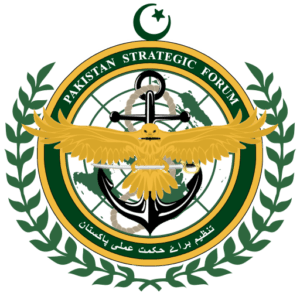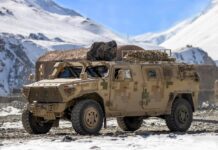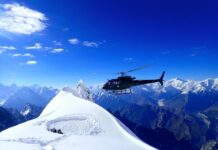Genesis
In the wake of 1979 Russian invasion of Afghanistan, Pakistan emerged as a front-line state against the communist expansion. Europeans and the Americans were now trying to win over Pakistan to their side in this Great Game.
American President Jimmy Carter (former peanut farmer) first offered $ 40 million of military and economic aid which was refused by President Zia-Ul-Haq terming this as ‘Peanuts’. President Reagan however improved the offer by raising it to $3.2 billion. As Pakistan joined the US camp against Communist Block, it started drawing up a list of equipment to prepare itself.
Selection of Cobra Helicopter
The two important items on the Pakistan wish list were F-16 for PAF and Cobra helicopters for the army. There were at that time three schools of military thought. One lobbied for raising another armored division, other supported multi-mission helicopter and then there was a strong side for a dedicated antitank platform. Army Aviation was with the last group spearheaded by Brigadier Mokeet. He prevailed upon others and managed to convince the decision makers in GHQ to opt for AH-1F dedicated anti-tank helicopter popularly known as Cobra.
The Contract
In the last week of 1981, a high-ranking military team including technical and ordnance officers apart from army flyers arrived in America. They went around different training facilities and finalized the modalities of training.
It was on the last day of 1981 when Major General Aslam Beg signed the contract on behalf of Pakistan Army. The deal was worth $300 million.
Arrival of Cobras, Dawn of a New Era
On 9th January 1985, the first batch of AH-1F Cobra helicopters arrived at Karachi by a special chartered flight in a semi-knocked down (CKD) state. The first helicopter to be flight tested was No.786-007 on 31st January 1985. On 15th February helicopters were shifted to the Faisal Base from where on 16th February 1985 all the choppers in two batches of five each were airborne at 0705hours proudly led by Colonel Riffat Beg Humayun, after refueling at Sukkur, Cobras landed at Multan at 1300hours. A warm welcome headed by the Chief of General Staff Major General Aslam Beg, awaited them. Cobras initially flew a march past.
Raising of Squadrons
31 and 33 Squadrons were raised on 12th March 1985. Both squadrons remained under officiating command, 31 under Major Saleem Akhund and 33 under Major Asad Kamal. 17th March 1985 On 17th March 1985, a formal induction ceremony for the Cobra helicopters was arranged at Qasim Base where the Vice Chief of Army Staff General Khalid Mahmood Arif was the chief guest. During the same month, the Cobra helicopters participated in the fly past of the Joint Services Pakistan Day’s Parade for the first time.
First Firing First aerial firing of AH-IF in Pakistan was carried at Muzzaffargarh Ranges between 13th November – 6th December 1985. Exclusive firing range was selected for this purpose. There were four Cobras who took part in this firing, two each from each squadron.
The first tube launched optically tracked wire guided (TOW) missile was launched by the crew of 33 Squadron.
Arrival of Second Batch of Cobra Helicopters (October 1986) The second batch of ten Cobra helicopters arrived at Karachi in semi knocked down (SKD) condition. After assembly by the team headed by Lieutenant Colonel Asif Javed Ghori, helicopters were ferried to Multan in two batches on 10th and 18th October 1986, respectively. This time ferry team consisted mainly of 31 Squadron pilots. First Accident On 31st December 1988, AH-1F #020 of 33 Aviation Combat Squadron, piloted by Captain Nayyer Iqbal and Major Mahmood Ul Hassan crashed in the training area, while carrying out autorotation.
Miraculously both the pilots suffered no major injuries, but the helicopter was damaged extensively. Well-earned credit must be given to the Engineering Group for rebuilding the smashed attack helicopter with intensive care and single-minded effort.
It took some time, but the mission was accomplished with ease and efficiency. To show the immense confidence in his engineering team, the rebuilt Cobra was test flown in 1991 by none other than the incumbent commander of the Combat Group, Colonel Ashraf Chaudhry.
Pressler Amendment
At the close of decade, the World in general and Pakistan underwent dramatic changes whose vibrations are still being felt. In 1988 President General Zia was killed in an air crash at Bahawalpur, resulting in political changes which brought Mrs Benazir Bhutto as the first ever female Prime Minister of not only Pakistan but of Muslim World. When she went on her first visit to America, she signed what was at that time considered to be the biggest arms deal in the history of Pakistan. It included another 20 Cobras for Army Aviation, unfortunately Americans later on imposed sanctions in the form of Presseler Amendment which not only put this newly agreed arms deal into forlorn but also put an end to Cobra conversion and simulator training abroad.
Years later, on a holiday, Major Mirza Aslam landed near Samundri, to drop Major Hameed. Unluckily he transmitted on Guard Frequency which was monitored by the American satellite and through American Military Attaché, Pentagon informed out of goodwill, to General Headquarters about this emergency. When Major Aslam landed back at Multan, almost whole base was there to receive him. This affair is known as ‘Clinton-Pressler’ saga.
First Blood (UN MISSION)
On 21st September, two Cobras and two Scouts of the Combat Group were given the task to locate and destroy the militia jeeps mounted with anti-tank and anti-aircraft weapons which had earlier fired at a Pakistani convoy in Mogadishu City. The mission was successfully completed, and one jeep was destroyed and other damaged. This was the first engagement carried out by Cobras.
#TeamPakistanStrategicForum







